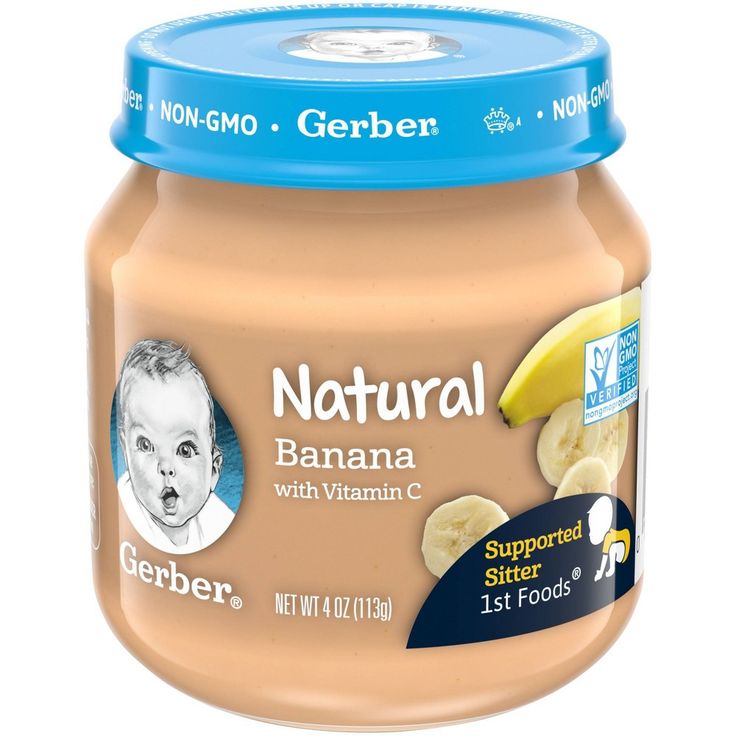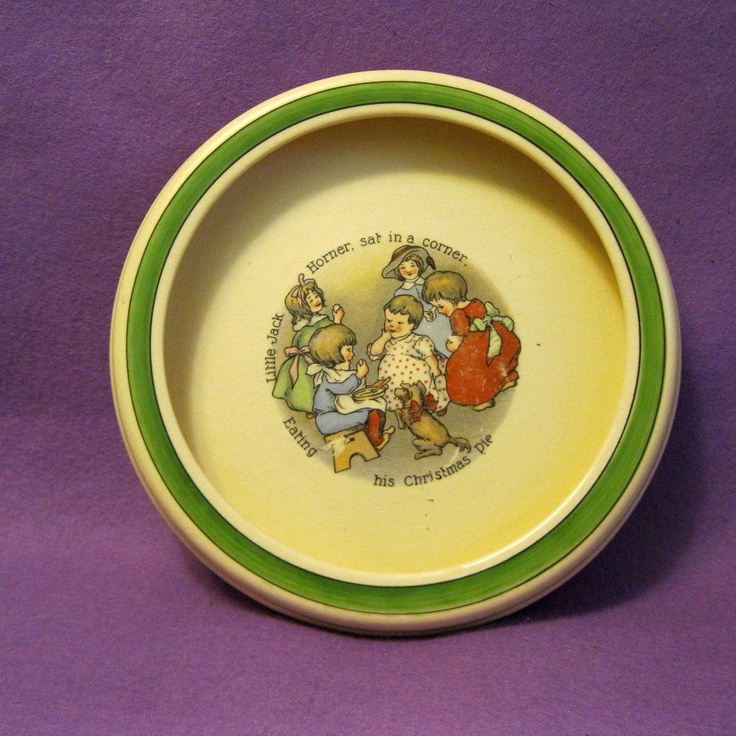What to feed baby calves
Caring for Newborn Beef Calves Separated from Their Dams
Calves that are orphaned or abandoned at a very young age present a unique set of challenges on a cow-calf operation. These situations arise not only from dams dying at or shortly after birth, but also from behavioral or health issues that keep a cow or first-calf heifer from properly mothering her calf. Calves out of cows producing insufficient milk or born as multiples may need to be raised with special attention. In the dairy industry, calves are routinely separated from their dams at very young ages. The resulting calves are sometimes referred to as “bucket” or “bottle” calves.
Initial Calf Care Priorities
Colostrum Intake
The first priority in caring for a bottle calf is to ensure adequate colostrum intake. Timing of colostrum intake is particularly important, because the calf’s ability to absorb colostral antibodies decreases rapidly throughout the first day of life. Plan for calves to receive 5 to 6 percent of their body weight in colostrum within the first 6 hours after birth. Feed colostrum again 12 hours later. To ensure proper timing of these feedings, calving herds must be watched closely for new births. Observe newborn calves within the first few hours of life to ensure that they nurse their dams. If dams refuse to allow their calves to nurse or are physically unable to allow nursing, take immediate action to provide colostrum to newborns.
Fresh colostrum from the dam is best and may require restraining and milking the dam or allowing the calf to nurse the restrained dam. This can be accomplished in a squeeze chute with removable sides that allow access to the udder. In the case of orphaned calves, providing colostrum from another source is critical. If fresh colostrum is not available, then the preferred source of colostrum is frozen colostrum previously harvested from within the same herd. The next-best option is frozen colostrum from another herd. When neither fresh nor frozen colostrum is available, then substitute commercially available powdered colostrum..jpg) Have colostrum and newborn feeding supplies on hand before the start of the calving season. Otherwise, it may be difficult to acquire and administer colostrum in a timely manner.
Have colostrum and newborn feeding supplies on hand before the start of the calving season. Otherwise, it may be difficult to acquire and administer colostrum in a timely manner.
Naval Care
Naval care is another calving management practice that should receive priority. Apply iodine or a similar topical disinfectant to the umbilical cord of the newborn calf. Continue to observe the naval closely to make sure that it dries and heals. Watch for signs of naval ill or infection, such as swelling of the naval. These infections are more likely in muddy or wet calving areas. Naval ill can develop even when the naval is disinfected shortly after birth and ground conditions are dry. An infected naval typically appears swollen and may be painful to the touch. Treat an infected naval immediately. Consult a veterinarian for treatment protocols.
Protection
Provide calves with clean, well-ventilated pens and shelter from the weather. Calf hutches can be purchased or barn pens used to house bottle calves.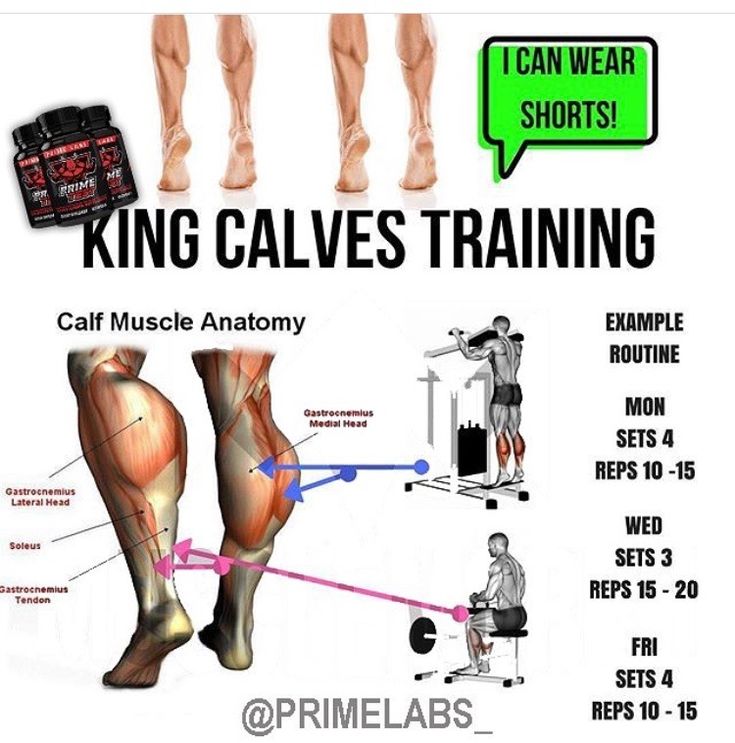 Individual penning can help prevent calves from sucking one another and reduce the spread of disease. It also facilitates individual monitoring of calf feed intake and feces consistency as signs of calf health. Allow 15 to 20 square feet of barn space for calves with access to an outdoor lot and 20 to 30 square feet of barn space for those without outdoor lots. Mississippi State University Extension Publication 2558 Beef Cattle Calving Management provides additional details about processing newborn beef calves.
Individual penning can help prevent calves from sucking one another and reduce the spread of disease. It also facilitates individual monitoring of calf feed intake and feces consistency as signs of calf health. Allow 15 to 20 square feet of barn space for calves with access to an outdoor lot and 20 to 30 square feet of barn space for those without outdoor lots. Mississippi State University Extension Publication 2558 Beef Cattle Calving Management provides additional details about processing newborn beef calves.
Very young calves raised on bottle or bucket feedings are generally more vulnerable to predators than heavier, older cattle. Without the close connection to a dam in the herd, bottle or bucket calves may separate themselves from the herd on a frequent basis. This leaves them vulnerable to predator attacks, and predators may be particularly attracted to the herd during calving season with the presence of afterbirth and new calves. Consider penning bottle calves in a more protected area such as a well-fenced pen with a mature cow until they grow to a size and thriftiness that allows them to better escape from or defend against predators..jpg) Extension Publication 2661 Predator Control on Beef Cattle Operations provides more information on this topic.
Extension Publication 2661 Predator Control on Beef Cattle Operations provides more information on this topic.
Feeding the Young Calf
For the first few months of life, bottle calves must be either artificially reared by humans on milk replacer diets or grafted onto nurse animals. These young calves are not yet mature ruminants, so they need a milk-based diet. A calf needs to consume approximately 8 percent of its birth weight in milk or milk replacer each day. Offer bottles twice daily in two equal feedings. Follow feeding directions on product labels. As the calf grows, keep the amount of milk replacer constant, but also offer calf starter feeds and good quality hay as its appetite increases. Make clean water available for the calf, as well.
Grafting to a Nurse Cow
Successful grafting of a calf onto the side of a lactating cow eliminates the labor and expense of bottle feeding. Besides providing a milk source for the calf, it also gives the calf protection from predators.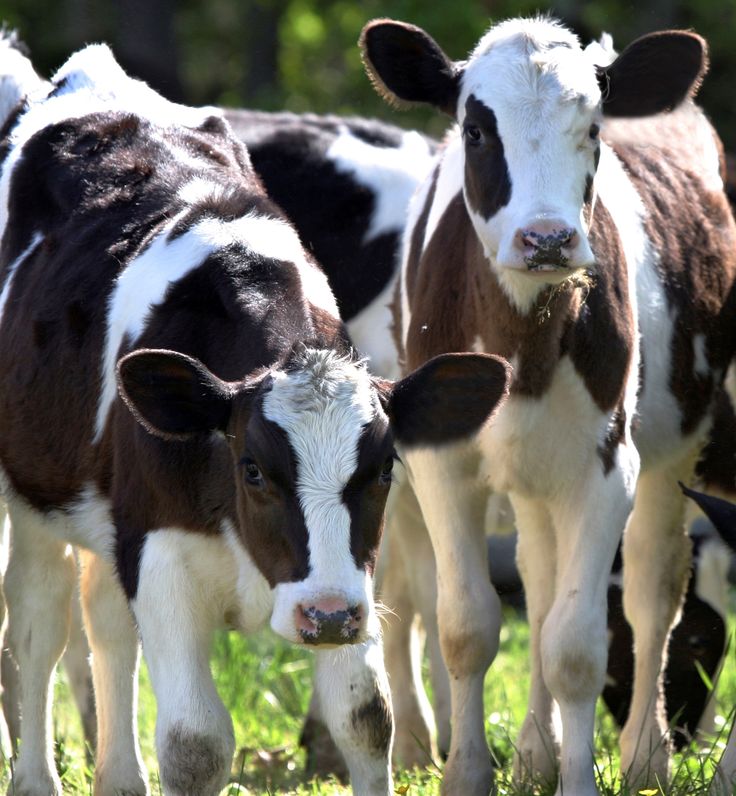 Grafting a calf onto a beef cow that has lost her calf or another nurse cow (often a dairy breed) purchased specifically for such use requires management and patience. Grafting may also be needed in cases in which the dam initially refuses to allow her own calf to nurse. This may be more common in females that calved for the first time or dams that gave birth to multiples.
Grafting a calf onto a beef cow that has lost her calf or another nurse cow (often a dairy breed) purchased specifically for such use requires management and patience. Grafting may also be needed in cases in which the dam initially refuses to allow her own calf to nurse. This may be more common in females that calved for the first time or dams that gave birth to multiples.
Start by penning lactating cows and newborn calves separately from the rest of the herd in a space that allows the calf to interact closely with the cow to which grafting is being attempted. Provide adequate shade and water in the pen, along with forages or other feedstuffs for the cow. For best results when introducing the cow and calf, do not bottle feed the calf to satiation immediately before trying to get it to suckle the prospective nurse cow. A tight-bagged (full-uddered) cow and a hungry calf are more likely to result in successful grafting.
When applicable, rub or tie the skinned hide (skin over the back along with the tail) of the nurse cow’s dead calf onto the grafted calf to transfer scent and encourage the cow to accept the new calf. Afterbirth and commercial products consisting of synthetic pheromones also can help in grafting. Using these scents may be helpful during the first 2 to 3 days but not much after that period.
Afterbirth and commercial products consisting of synthetic pheromones also can help in grafting. Using these scents may be helpful during the first 2 to 3 days but not much after that period.
The cow and calf may be too distracted by human presence to nurse or bond when first introduced. Allow them time alone together without distraction, and then either observe them at a distance undetected or check them later for signs of nursing, including a full belly on the calf and slick teats or reduced udder filling on the cow.
Initially give the nurse female an opportunity to accept the calf without restraint, but do not wait too long for nursing to occur before relying on restraint. It is critical that newborn calves receive adequate colostrum and nutrients in early life. Also, dehydration is a risk that must be addressed through forced feeding situations if necessary. If the cow repeatedly kicks at or butts the calf and does not allow it to nurse when unrestrained, physically restrain the nurse cow in a squeeze chute with the bottom sides removed so the calf can nurse twice a day.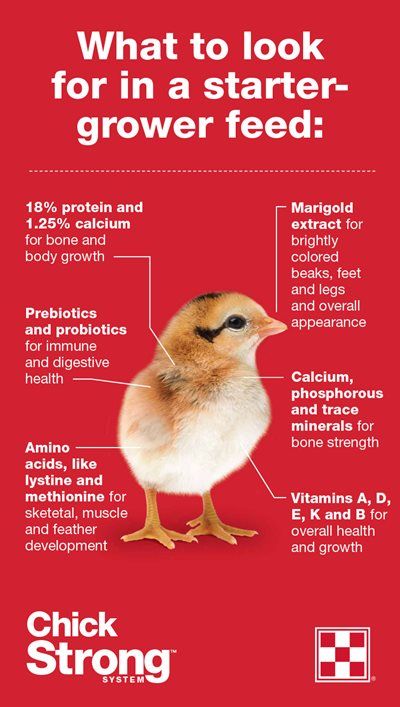 Repeat until the cow claims the calf willingly.
Repeat until the cow claims the calf willingly.
If the nurse female has undergone a difficult birth or is stressed from losing her calf, use extra care in handling her, and observe her closely for signs of distress or health problems. It is possible that even when a nurse female accepts a grafted calf, she may not lactate well enough to support the calf. In some cases, the cow may dry off (discontinue lactation). Do not assume that a suckling calf is getting adequate nutrients through nursing. Closely monitor the calf’s weight and condition, and supplement additional nutrients as needed.
Milk Replacer Diet
In the absence of a nurse cow, use a milk replacer that contains at least 22 percent crude protein and 15 percent fat. Mix milk replacer with warm water to better dissolve the product and make it more attractive to the calf. If a hot water source is not available close to the feeding site, use a thermos or other insulated container to transport warm water to the feeding site. Then, mix the warm water and milk replacer powder together when ready to feed the bottle. Keep the temperature of the mix consistent between feedings and not more than 100°Fahrenheit. Also, use the same amount of milk replacer in the mix each feeding. Be sure to thoroughly mix the powder and water by stirring or shaking to dissolve all of the powder into the mixture.
Then, mix the warm water and milk replacer powder together when ready to feed the bottle. Keep the temperature of the mix consistent between feedings and not more than 100°Fahrenheit. Also, use the same amount of milk replacer in the mix each feeding. Be sure to thoroughly mix the powder and water by stirring or shaking to dissolve all of the powder into the mixture.
Use separate bottles for each bottle calf to limit risk of disease spread. Sanitize all feeding equipment after each meal. To protect human health, particularly that of susceptible young children, keep bottle feeding supplies out of human food preparation areas.
Although a calf may instinctively nurse its mother, it may need to be taught to drink from a bottle. Start by inserting one or two fingers into the calf’s mouth. As the calf begins to suck, insert the bottle nipple in its mouth. It may be necessary to straddle or stand beside the standing calf and support its head upward while the calf is backed against a solid fence, wall (corner is best), or vehicle..jpg) This head position will also help close the esophageal groove present in young calves and shunt milk past the rumen and directly to the abomasum (“true stomach”) instead.
This head position will also help close the esophageal groove present in young calves and shunt milk past the rumen and directly to the abomasum (“true stomach”) instead.
It may take a while to get lethargic or ill calves to actively suck a bottle. When possible, spend the additional time to get a calf started on a bottle before resorting to a forced infusion of feeding liquid. But, if a calf still refuses to take a bottle, a stomach tube (Figure 1), also known as an esophageal feeder, can be used to infuse milk replacer directly to the calf’s stomach. Take extreme care to ensure that the tube is in the esophagus and not the windpipe. Listen to make sure that breathing sounds are not coming from the tube. Sometimes, infusion of milk replacer into the stomach will stimulate a calf’s appetite. Weak calves may require smaller and more frequent feedings. Continue to monitor calves for signs of unthriftiness such as poor growth, scours, and a “pot-bellied” appearance. Have a scours prevention and treatment plan in place based on the advice of a veterinarian familiar with the operation. Extension Publication 2551 Identifying Sick or Injured Cattle provides additional insight about monitoring calves for illness.
Have a scours prevention and treatment plan in place based on the advice of a veterinarian familiar with the operation. Extension Publication 2551 Identifying Sick or Injured Cattle provides additional insight about monitoring calves for illness.
As calves become used to drinking from a bottle twice a day, they may anticipate feedings and aggressively pursue the bottle. These calves become accustomed to humans feeding them. Although bottle calves are often considered tame or docile, the bottle handler needs to be careful of being head butted by the calf. This becomes more of a safety concern as the calf gains stature and weight over time. A wire bottle holder can be used to attach a filled bottle to a fence to keep the handler from having to hold the bottle during feeding. Be sure to remove the bottle from the calf when emptied to prevent the calf from sucking excess air into its gut.
Bucket feeding of milk replacer is also possible, but take precautions to keep calves from stepping in and knocking over buckets..jpg) Make sure that buckets are not too tall for calves and are secured. To teach bucket feeding, place fingers moistened with milk into the calf’s mouth as described earlier. As the calf begins to suck, gently lower its mouth into the bucket of warm milk. Keep its nostrils clear of the liquid. Repeat as needed until the calf drinks on its own.
Make sure that buckets are not too tall for calves and are secured. To teach bucket feeding, place fingers moistened with milk into the calf’s mouth as described earlier. As the calf begins to suck, gently lower its mouth into the bucket of warm milk. Keep its nostrils clear of the liquid. Repeat as needed until the calf drinks on its own.
Transition to Solid Feeds
By 3 weeks of age, calves should be able to digest small amounts of solid feeds. Make sure feeders are not so high or deep as to be difficult for calves to reach the feed. Calf starter feeds should be dust-free, highly palatable feeds containing 75 to 80 percent total digestible nutrients (TDN), 15 to 20 percent crude protein, and adequate minerals and vitamins. They should be coarsely ground, rolled, or pelleted to facilitate feed intake and rumen development. Calves can be adapted from starter to grower rations at around 4 months of age.
After the calf finishes each milk replacer meal, place a small amount of solid feed in its mouth to encourage feed tasting. Keep small amounts of dry, fresh feed in a feed box or tub in the calf’s pen. At first, calves will consume only about a fourth of a pound of grain per day. This will increase to about 2 to 3 pounds of starter feed by 3 months of age and approximately 3 to 5 pounds of feed at 6 months of age. Do not feed more than a calf will clean up in a day to avoid leaving stale or moldy feed.
Keep small amounts of dry, fresh feed in a feed box or tub in the calf’s pen. At first, calves will consume only about a fourth of a pound of grain per day. This will increase to about 2 to 3 pounds of starter feed by 3 months of age and approximately 3 to 5 pounds of feed at 6 months of age. Do not feed more than a calf will clean up in a day to avoid leaving stale or moldy feed.
Hay or pasture consumption encourages rumen development. Hay should be high quality and offered free choice. Provide limited exposure to green pasture, greenchop, or silage until calves are 6 months of age, because excessive feeding of these high-moisture forages to young calves can limit dry matter and nutrient intake.
Weaning Young Calves
Calves can be weaned at 4 to 8 weeks of age if eating well (1½ to 2 pounds of starter feed daily). Wait longer to wean less vigorous calves or calves that still have low grain intake. Extension Publication 2555 Early Weaning Beef Calves provides detailed information on this topic.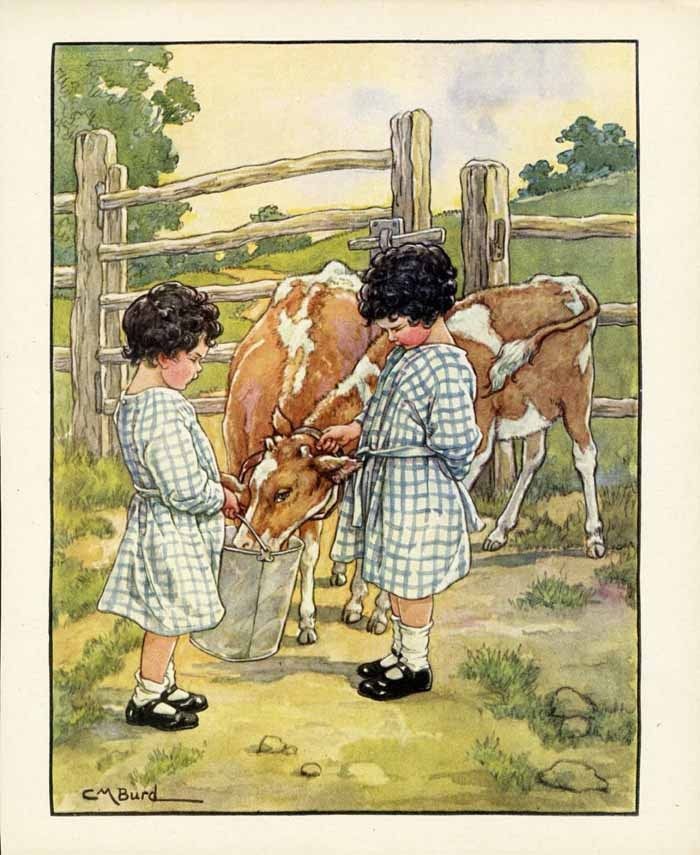 Gradual weaning reduces calf stress as discussed further in Extension Publication 2578 Beef Calf Preconditioning Programs. Do not change up other aspects of the calf’s routine when weaning a young calf from milk.
Gradual weaning reduces calf stress as discussed further in Extension Publication 2578 Beef Calf Preconditioning Programs. Do not change up other aspects of the calf’s routine when weaning a young calf from milk.
Make sure that weaning records reflect the correct contemporary group status of the calf. It is not fair to compare weaning weights for an orphan calf receiving milk replacer to those of other calves raised by their own dams. Most breed associations have special weaning codes to account for this.
Conclusion
Raising a bottle calf requires patience and attention to care. It may take several days or even weeks of good management to get a bottle calf well on its way to surviving on its own. Close management of calf nutrition and health are keys to successfully raising a bottle calf. For more information about beef cattle production, contact your local county MSU Extension office or visit Extension's livestock beef site.
Publication 2810 (POD-12-19)
By Jane Parish, PhD, Professor and Head, North Mississippi Research and Extension Center.
Copyright 2019 by Mississippi State University. All rights reserved. This publication may be copied and distributed without alteration for nonprofit educational purposes provided that credit is given to the Mississippi State University Extension Service.
Produced by Agricultural Communications.
Mississippi State University is an equal opportunity institution. Discrimination in university employment, programs, or activities based on race, color, ethnicity, sex, pregnancy, religion, national origin, disability, age, sexual orientation, genetic information, status as a U.S. veteran, or any other status protected by applicable law is prohibited. Questions about equal opportunity programs or compliance should be directed to the Office of Compliance and Integrity, 56 Morgan Avenue, P.O. 6044, Mississippi State, MS 39762, (662) 325-5839.
Extension Service of Mississippi State University, cooperating with U.S. Department of Agriculture. Published in furtherance of Acts of Congress, May 8 and June 30, 1914. GARY B. JACKSON, Director
GARY B. JACKSON, Director
Home - Our Co-op
By Candice Johns with MannaPro
Feeding schedule
Most calves need only need 2–3 bottles a day. You won’t have to worry about middle-of-the-night feedings or early-morning waking; bottle calves eat during the day and sleep at night. They will need only two bottles a day if they are healthy, and the weather is nice. If it’s particularly cold or your calf isn’t gaining weight, three bottles will do.
- Watch for scours (more on that in a minute)
- Provide pasture, water, forage (after weaning is most typical), good-quality hay, and a clean environment
- Provide a free-choice calf-starter such as Calf-Manna® by Manna Pro® (if desired)
- Offer a good mineral program
Scours
I’m pretty sure our bottle calves would literally eat themselves to death if given the opportunity. Their voracious appetite can result in what are known as calf scours or scouring.
Their voracious appetite can result in what are known as calf scours or scouring.
Calf scours are basically baby cow diarrhea. This condition is dangerous and can be fatal. Be sure to watch your bottle calves closely (especially their stool) to be sure they are healthy.
If your bottle calf has access to a lactating dairy cow, they could face a higher probability of overfeeding. Some mama cows will be happy to “adopt” your new calf. Even when our calves are being well fed (three bottles a day), they may still run to the milk cows in search of a free meal. Don’t count on a full belly to tell your little one to stop eating. Manna Pro has a new product that supports digestive upset: Calf Care™.
If you suspect calf scouring in your herd, contact your veterinarian. Scours can be dangerous for calves (especially very young ones) and needs to be treated.
Fences are friends
If you have ever watched a calf nurse from a mama cow, you probably saw them banging their head into her udder..jpg) This is normal behavior that stimulates the udder to “let down” additional milk for the hungry calf. This head-butting doesn’t hurt the mama cow, but during bottle feeding it can be annoying.
This is normal behavior that stimulates the udder to “let down” additional milk for the hungry calf. This head-butting doesn’t hurt the mama cow, but during bottle feeding it can be annoying.
Calves don’t seem to realize that head-butting the bottle will not make the milk come out any faster, nor will it make any more milk appear. You may find it helpful to position yourself on the other side of a gate or fence while feeding, which can help minimize head-butting.
When the bottle is empty, make your exit — quickly
When the bottle is empty and feeding time is over, give your little guy (or gal) a scratch, pat them and tell them they’re adorable, and then make your escape — fast, especially if you did not listen to tip #4 and are standing in the field with them.
Why?
Feeding my little bottle calves can be the highlight of my day. They are so excited. They greet me with the sweetest “moooo” you’ve ever heard. They love their bottles and have the enthusiasm of a puppy. Calves may be the cutest animals in the world
Calves may be the cutest animals in the world
That is, unless it’s raining, pouring, sleeting, or icing outside. Then it’s not as fun. The calves are just as adorable, grateful, and spunky, but I am not as enthusiastic about the whole thing.
This is why you may need to run after feeding them their bottle. As soon as our calves finish their bottles, they immediately start looking for an udder. If a lactating dairy animal isn’t in plain sight, the calves may turn to the person holding the bottle — nudging, bumping, and smearing their soaking wet, milky, slobbery heads all over the front and back of my jeans trying to find an udder.
Bang. Nudge. Bump. “There’s got to be one here somewhere.”
“No, Norman [that’s the calf], I don’t have an udder.”
Raising bottle babies is a fun adventure. If you have always wanted to get into the cattle business but get indigestion when you see cattle prices, a bottle calf may just fit the bill. It’s probably one of the easiest, most inexpensive ways to get into the cattle business. Raising bottle calves will not only get you a herd “on the cheap,” but you’ll also make some great memories.
Raising bottle calves will not only get you a herd “on the cheap,” but you’ll also make some great memories.
Calf feeding | How and what to feed calves from the first days of life at home (instruction)
To lay the foundation for high productivity of calves, it is necessary to provide them with a balanced diet. For newborns, the first and best food is colostrum, which is an indispensable source of nutrients and immunoglobulins that create the main defense against infections. As they grow older, the diet of animals is changed. At the same time, high-quality compound feed is necessary for good growth of calves. In addition, taking into account age and breed, special additives are selected. nine0003
In the company "Yuzhnaya Korona" you can purchase high-quality and highly physiological feed for fattening calves and young cattle. Our plant produces safe certified products that improve the physical performance of animals.
Content:
- What to feed calves
- Feeding steps
- How to feed calves: basic ways
- Benefits of feeding calves with compound feed and premixes
- Common mistakes when feeding calves
- Benefits of Yuzhnaya Korona compound feed for calves
What to feed calves
If two basic conditions are met, a high weight gain will be guaranteed:
- calves should have good immunity;
- fast transition to roughage consumption in accordance with the most balanced composition.

During the first 90 days of animal growth, cartilage tissue is replaced by bone, live weight gain occurs moderately and averages 500 g / day, a voluminous type of digestive system is created, and finally, colostral immunity is replaced by acquired immunity.
Feeds of vegetable origin in calves are not digested. Until the age of 10 days, the proventriculus is not yet fully developed, and the abomasum does not produce enzymes so that vegetable protein, starch and sucrose can be digested. Mistakes in feeding and growing during the milk period can provoke indigestion, respiratory infections, various diseases, slow down development, and cause stress. What to feed calves correctly for rapid growth and how much to feed? nine0003
Colostrum is the cow's first milk after calving. It is recommended to give it the first portion of 3.5-4 liters during the first hour of life and then another 2 liters after 10-12 hours. Properly carried out the first feeding with colostrum is critical for the formation of colostral immunity, which guarantees good health, proper development, high milk production and life expectancy of cattle in the future..jpg) Then, until the age of 15 days, the calf is recommended to be fed with mother's milk, then according to the scheme - milk replacer (whole milk substitute), reverse. nine0003
Then, until the age of 15 days, the calf is recommended to be fed with mother's milk, then according to the scheme - milk replacer (whole milk substitute), reverse. nine0003
The entire feeding system of young animals is aimed at preserving and strengthening the protective properties of the body of calves. What to choose - whole milk, its substitute or a mixture of both. The farmer usually focuses on affordability and economy. From the point of view of labor organization, milk replacer is more profitable to use on larger farms: they begin to use it 10–14 days after birth. In addition, milk replacer at a price lower than natural milk contains 2.5 times more vitamins A, D3, E. The substitute also has a constant level of nutrients and hygiene parameters: infectious diseases that manifest themselves in the herd are not transmitted from cows to calves. nine0003
To ensure a smooth transition to roughage, from the third day it is recommended to introduce granular compound feed into the diet. It helps to accelerate the development of the absorbing surface of the scar, that is, it increases the number and length of the villi of the scar epithelium. The advantages of a factory-made starter food are freshness, palatability and variety.
It helps to accelerate the development of the absorbing surface of the scar, that is, it increases the number and length of the villi of the scar epithelium. The advantages of a factory-made starter food are freshness, palatability and variety.
It contains a lot of protein and energy, so the calf can not be fed hay until he is accustomed to grain feed. Also, one should not forget about the unlimited, constant and free access of animals to drinking water. Thanks to this, the young are more willing and accept roughage in greater quantities. At the age of up to 2 weeks, water is boiled before use and cooled to a temperature of 20-25 ° C. At the age of 2 weeks, water is given without prior boiling. nine0003
Feeding steps
How to feed calves? The diet is planned taking into account the physiological needs of animals in each of the age periods:
- Dairy - 60-90 days. The main food for animals is dairy feed. The other part of the diet consists of concentrates, hay, grass cuttings.
 But they are accustomed to roughage gradually. So, by the age of 1 month, the calf should consume about 200 g of hay per day. It is required to distribute feed separately, and it is necessary to monitor their cleanliness and freshness. For example, hay contaminated with animal saliva can quickly turn sour, so you need to replace it in a timely manner. Since the feeding system of young animals is aimed at preserving and strengthening the protective properties of the body, it is important to include factory feed in the diet. It provides a balanced set of all the necessary vitamins and microelements, which is almost impossible to achieve with self-preparation of grain mixtures. nine0013
But they are accustomed to roughage gradually. So, by the age of 1 month, the calf should consume about 200 g of hay per day. It is required to distribute feed separately, and it is necessary to monitor their cleanliness and freshness. For example, hay contaminated with animal saliva can quickly turn sour, so you need to replace it in a timely manner. Since the feeding system of young animals is aimed at preserving and strengthening the protective properties of the body, it is important to include factory feed in the diet. It provides a balanced set of all the necessary vitamins and microelements, which is almost impossible to achieve with self-preparation of grain mixtures. nine0013 - Post-dairy - lasts 90 days or until the calf is 6 months of age. We recommend using starter feed because it provides a smooth transition from milk to coarse and succulent feed. In addition to providing the calf with all the necessary nutrients and energy, reducing milk costs, it also accelerates the normalization of cicatricial digestion, reduces stress factors and the risk of generalized dyspepsia.
 The introduced vegetable diet assumes several varieties of feed at once, including root crops. When using a grain mixture, you must also remember to add premixes. nine0013
The introduced vegetable diet assumes several varieties of feed at once, including root crops. When using a grain mixture, you must also remember to add premixes. nine0013 - The period of intensive growth - until the calf reaches the age of 12 months. Gives high growth, up to puberty. Attention is paid to stable and complete feeding with the rational use of bulk feed in the form of feed mixtures with compound feed for young animals.
- Final fattening - until the calf reaches the age of 18 months. What to feed calves? Animals are given feed with a high concentration of energy to increase fatness, slaughter yield of meat and improve its quality. The diet may include root crops (5-8 kg), roughage (up to 6 kg) and succulent feed - 25-30 kg per head per day. nine0013
Nutrient requirements of calves by weight
(German Agricultural Association DLG)
| Component | Calf weight, kg | ||||||
|---|---|---|---|---|---|---|---|
| 50–59 | 60–69 | 70–79 | 80–89 | nine0–99 | 100–119 | 120–140 | |
| Net Lactation Energy (NEL) (MJ) | 9. 4 4 | 11.0 | 12.6 | 14.2 | 15.8 | 17.4 | 19.0 |
| Crude protein (g) nine0084 | 300 | 340 | 380 | 420 | 460 | 500 | 540 |
| Ca (g) | nine | eleven | 13 | fifteen | nine0083 17nineteen | 21 | |
| P(g) | five | 6 | 7 | eight | nine | 10 | eleven |
| Na (g) | 1.0 nine0084 | 1.5 | 2.0 | 2.5 | 3.0 | 3.5 | 4.0 |
| Mg (g) | 1.0 | 1.4 | 1.8 | 2.2 | 2.6 | nine0083 3.03.4 | |
How to feed calves: the basics
Articles - South Crown
No page found with this URL
404
Please check the URL and try again.
You can return to the main page of the site.
Or see the sitemap.
- Compound feed
- Compound feed for birds
- For broiler chickens
- For quail nine0013
- For laying hens
- For ducks
- for turkeys
- Compound feed for pigs
- For piglets
- For fattening pigs
nine0012 Compound feed for herbivores - For rabbits
- For chinchillas
- Compound feed for birds
- Compound feed for cattle/MRS
- For calves/milk cows
- For goats/sheep
nine0012 Other feed - Feed mixture
- Raw material
- Premixes for birds
- For laying hens
- For breeding layers
- Premixes for pigs
- Premixes for herbivores
- Premixes for cattle
Benefits of our feeds
-
Precise balance of elements necessary for animal growth
-
Less consumption of feed - ingredients are absorbed more intensively
-
Delicious food - stimulates the active appearance of appetite
-
Increased immunity - animal deaths are reduced to a minimum
-
Only natural, pure and healthy raw materials
-
Animal weight gain is on average 5-15% higher than normal
Authorization
E-mail:
Wrong e-mail
Mandatory
Password
Wrong password
Mandatory
Authorization
You have successfully authorized on the site
Registration on the site
Email Mail (Login)
Filled E-mail
Filling a field is mandatory
Password
Password too simple
Filling a field, be sure to
Passwords,
Filling the field is necessarily
Filled incorrectly filled with incorrectly filled Name
This field is required
Phone
Incorrectly filled Phone
This field is required
By registering, I agree to the rules for the sale of goods and the user agreement
Security code
Password recovery
TODO: Feedback form
in footer.

 Suction
Suction .jpg) At the end of fattening, the risk of calves becoming obese increases, so it is recommended at this stage to introduce compound feed with a lower energy content and a higher protein concentration. nine0003
At the end of fattening, the risk of calves becoming obese increases, so it is recommended at this stage to introduce compound feed with a lower energy content and a higher protein concentration. nine0003 
.jpg) The rate can vary significantly depending on other nutrition, as well as the quality of hay and silage, but most feeding schemes are designed for consumption of 170-225 grams per head. nine0003
The rate can vary significantly depending on other nutrition, as well as the quality of hay and silage, but most feeding schemes are designed for consumption of 170-225 grams per head. nine0003 

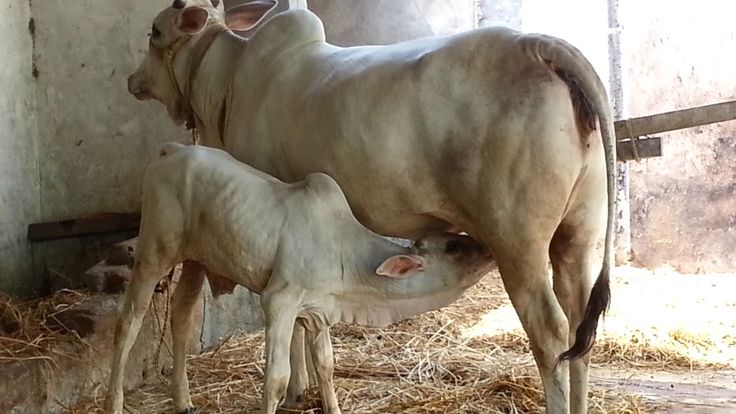 To complete the registration, follow the link provided in the letter.
To complete the registration, follow the link provided in the letter. 
